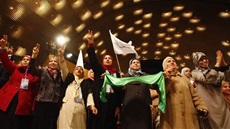Educating Girls in the Middle East Brings Stability to the Region
< < Go Back
A great stabilizing element in the Middle East may very well be the education of girls and women. There are strong barriers against this goal, with many families — particularly those living in poverty — being unable to send their daughters to universities, secondary school or even primary school. The cost of forgoing another helping hand at work or at home may simply be too high.
Additionally, there is a stigma that women’s education has a lower rate of return due to the idea that women will not use their education to pursue work outside of the home. All these reasons contribute to the pressure on girls and women in Arab states to marry while they are still very young. Marriage at this stage leads to early childbearing, which can pose significant health risks for the infant after birth.
Arab-dominated countries are making historic progress.
– Leading the pack in improvements to primary school participation are Morocco and Algeria, both of which have over 96 percent participation rates among girls.
– Trailing behind are Djibouti and Yemen, two countries whose participation rates have risen by 20 percent in primary schools. Djibouti and Yemen report 55 percent and 78 percent in enrollment among girls, respectively.
With the Middle East and North Africa (MENA) region conference approaching and the 2015 Beijing conference, it is more vital than ever to stress the cultural evolution of women\’s role in society. Education Improvements must be available to girls, even in the most poverty-stricken areas of the Arab world.
More From NCPA:




